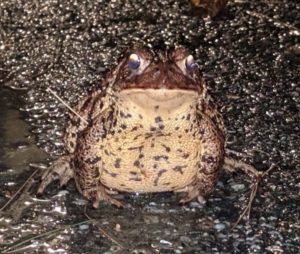64 Scholarly Detours and New Beginnings
Michael Davidson
Summer 2019
“To fill a gap in my teaching I hadn’t realized was there.”
Personal Connections
A fringe benefit of my CPLC involvement has been the happenstance connections I’ve made with other faculty and staff. I’ve met several interesting and talented people from diverse disciplines and far flung places.
During that first session on June 4, when we brainstormed PSU values, I was talking with Chen Wu about how those values related to traditional Chinese culture. It was a lesson in contrasts and a spontaneous reminder of the significance of one of our HoMs: integrated perspective.
Education Scholarship

But the deepest and most influential results of my participation in the Learning Community came from reading Joshua Eyler’s How Humans Learn: not just reading the book, but taking many scholarly detours through the research he cited, drawing connections between them, and trying to articulate the ideas in my blog (all links in this post are to my other posts).
That exploration led me to numerous evidence-based and expert-endorsed concepts and methods that I will incorporate into my teaching.
The Power of Stories
The chapter on sociality led me to Louis Cozolino of Pepperdine University and Dan Willingham of the University of Virginia. Through their work, I came to appreciate the power of story-telling, the psychologically privileged place of narrative, and the ingredients for incorporating stories in effective pedagogy. I will use these ideas in my TWP section.
The Scientist as Child

From the chapter on curiosity, I learned about Alison Gopnik‘s ideas on child and adult learning. Kids are eager learners. Gopnik suggests that youthful alacrity predisposes children to scientific investigation.
She challenges the conventional notion that education is a process of replacing childish thinking with grown-up ideas. Instead, we can harness our pupils’ natural learning tendencies and, in the process, salvage some of the curiosity that is often lost in school.
Asking the Right Questions
Perhaps most notably, How Humans Learn led me to the Question Formulation Technique (QFT), a classroom method created by Luz Santana and Dan Rothstein for a dropout prevention program in Lawrence, MA.
I was drawn to the QFT because it promised to fill a gap in my teaching I hadn’t realized was there. The technique provokes inquiry and reflection; instead of passively responding to the questions I hoped would spark their interest, students in the QFT will drive their own investigation. Participants become agents of their own discovery while, at the same time, they are compelled to practice meta-cognition. The QFT also connects nicely to our four Habits of Mind.
So enthusiastic over the QFT’s potential, I conducted a session with my faculty colleagues in the library. That experience was positive, so I decided to propose a University Days presentation on it. Even though there were several compelling breakout sessions happening at the same time, 17 people attended my QFT session. The participants were deeply engaged and the vocal feedback was very encouraging.
The official reviews were few, but entirely positive:
“helpful and informative”
“Great workshop! Learned a new technique to start discussions and get students asking more questions.”
I’m excited to employ the QFT in class. It could be a powerful catalyst in the production of their group projects.
Takeaways
The concepts mentioned above are noteworthy, but not the only ones I gleaned from my CPLC reading. Others include the experiential learning theory of David Kolb and peer instruction from Eric Mazur.
For a relatively inexperienced teacher like me to attempt to absorb so many scholarly methods in three months was challenging. But, I had two powerful motivators working on me. The aspiration to succeed in TWP led me from the front, while the risk of disappointing my CPLC colleagues pushed me from behind. With the carrot of successful pedagogy and the stick of CPLC deadlines, I achieved nearly everything I set out to accomplish. While this sounds like the end, I know it is only the beginning.


Feedback/Errata